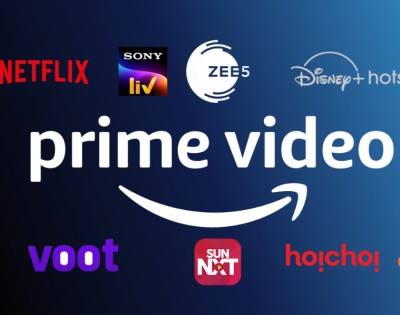
OTT streaming platforms and digital news providers operating in the country have now been brought under the jurisdiction of the Information and Broadcasting Ministry. This means their content will be regulated by the I & B Ministry. But what are OTT platforms?
What does OTT stand for?
The acronym OTT stands for “Over the Top” service. OTT platforms are audio and video steaming services. They provide content on request over the Internet. Which means content of one’s choice can be watched by the individual consumer anytime anywhere, without the need for cable or DTH services. In order to view the content, the consumer needs a device (such as mobile, tablet, or laptop) that supports OTT and an internet connection. One major advantage with OTT is consumers pay for specific platforms they want access to. Netflix, Amazon Prime Video, Disney+ Hotstar, ALTBalaji, Zee5, VOOT, Jio Cinema, and Sony LIV are some of the OTT platforms available.
How do they work?
A relatively new form of entertainment, OTT platforms are classified as digital media, OTT platforms started out as content-hosting platforms but soon ventured into production, making films, serials, and documentaries. They buy the rights to the movies they wish to release or stream from the producers, or even produce them in collaboration with production houses. While most OTT platforms provide some content for free, they charge a monthly subscription for premium content. During the COVID-19 outbreak, many filmmakers turned to major OTT platforms to release their films instead of waiting for theaters to reopen. For instance, Jyotika’s “Ponmagal Vandhal” was the first Tamil film to release on an OTT platform, Amazon Prime Video, in May 2020 after theaters were shut due to the pandemic.
What are the new rules?
So far, OTT platforms have remained largely unregulated, providing diverse, versatile content to viewers. The Government tightened its grip on these streaming platforms following growing complaints of alleged objectionable content in some of the shows streamed. The new rules mandate these video streaming platforms to classify content into five age-specific categories, set up a grievance redressal mechanism, and appoint an officer to address grievances. The three-tier grievance resolution system begins with self-regulation by the content platform and ends at a government-appointed panel headed by a ministry official. The government-appointed committee will look at complaints that remain unresolved at the self-regulating level.
Quick Facts
- There are over 40 OTT service providers in India.
- India is currently the world’s fastest growing OTT market, and is all set to emerge as the world’s sixth-largest by 2024.
- Over 22 million viewers in the country watched subscription-based video-on-demand content in 2020. This figure is projected to touch 57 million by 2022.
- nexGTv was the first OTT mobile app to live-stream IPL cricket matches during the 2013 season.
Picture Credit : Google



